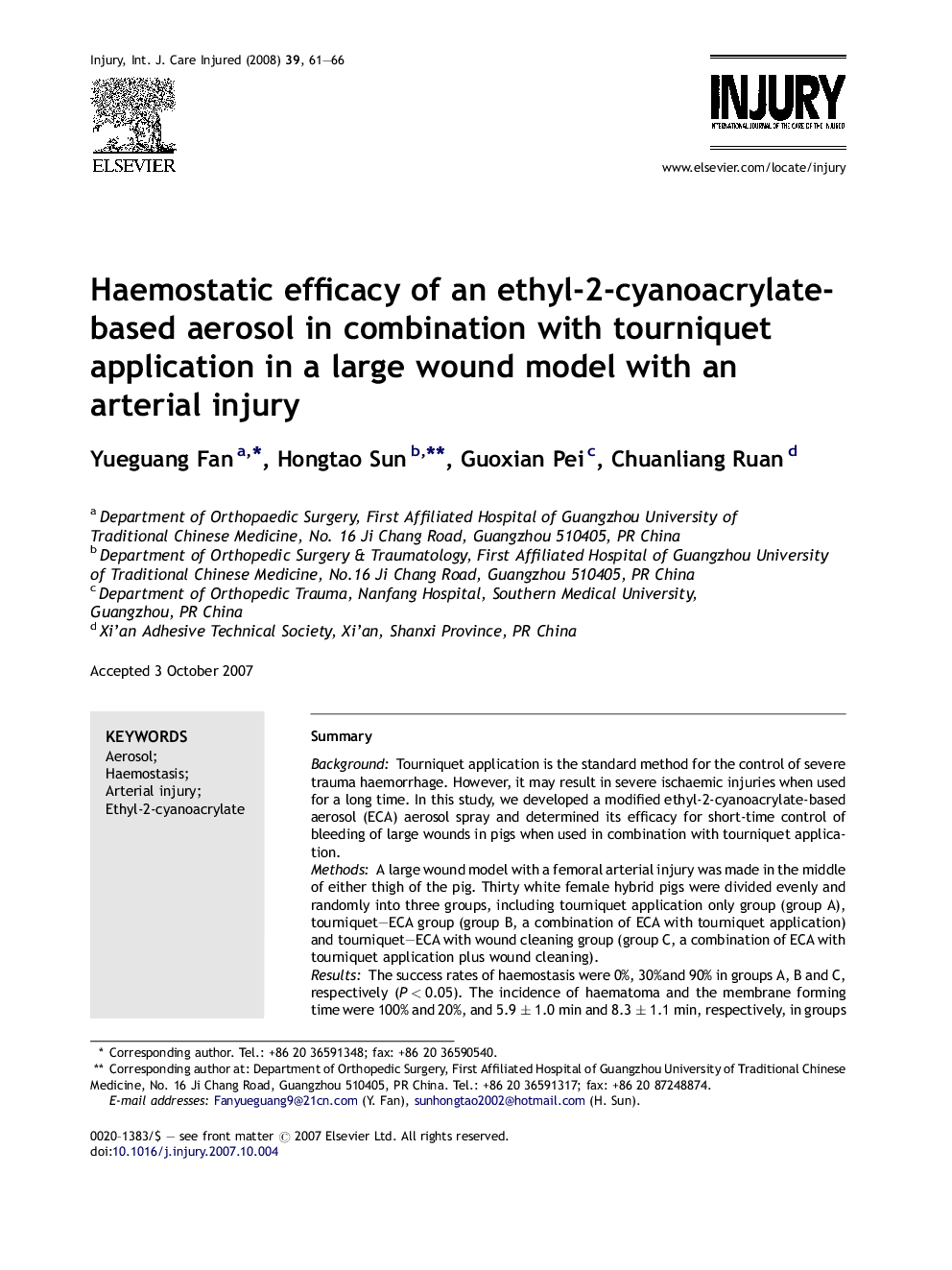| Article ID | Journal | Published Year | Pages | File Type |
|---|---|---|---|---|
| 3242235 | Injury | 2008 | 6 Pages |
SummaryBackgroundTourniquet application is the standard method for the control of severe trauma haemorrhage. However, it may result in severe ischaemic injuries when used for a long time. In this study, we developed a modified ethyl-2-cyanoacrylate-based aerosol (ECA) aerosol spray and determined its efficacy for short-time control of bleeding of large wounds in pigs when used in combination with tourniquet application.MethodsA large wound model with a femoral arterial injury was made in the middle of either thigh of the pig. Thirty white female hybrid pigs were divided evenly and randomly into three groups, including tourniquet application only group (group A), tourniquet–ECA group (group B, a combination of ECA with tourniquet application) and tourniquet–ECA with wound cleaning group (group C, a combination of ECA with tourniquet application plus wound cleaning).ResultsThe success rates of haemostasis were 0%, 30%and 90% in groups A, B and C, respectively (P < 0.05). The incidence of haematoma and the membrane forming time were 100% and 20%, and 5.9 ± 1.0 min and 8.3 ± 1.1 min, respectively, in groups B and C (both P < 0.05). The haemostatic time and the thickness of membrane were 11.9 ± 1.8 min and 10.2 ± 1.4 min, and 0.68 ± 0.29 mm and 0.79 ± 0.25 mm, respectively, in the two groups (P > 0.05, both).ConclusionThe ECA spray achieves haemostasis within a very short time when it is used in combination with tourniquet application in a large wound model with an arterial injury. It may effectively prevent the wound from bleeding without the need for any long-term pressure bandage to wrap the wound, and it is easy to be disposed in debridement. Therefore, it may serve as an optimal choice for the first aid of large wounds with an arterial injury.
